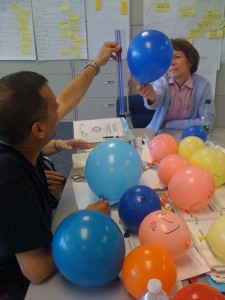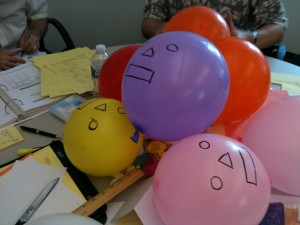Being Agile when Designing and Playing Agile Games
By Mary Gorman
In my Stickyminds.com column “Playing at Work: Agile Games Deliver Value” I share game ideas and experiences – the benefits games can provide, selecting an appropriate game, facilitating a game, and designing a winning game.
 Designing and Facilitating Agile Games
Designing and Facilitating Agile Games
When writing the column I got to thinking how agile principles could provide a basis for good game design and facilitation. I reflected on a recent experience I had at Deep Agile 2010: Empowering Teams with Agile Games. Working in a small group we created a new game, tested it, and retrospected both the game and our design process in less than half a day. We consciously (and some times unconsciously!) were being agile! (To see and learn more about our game, read Michael Sahota’s summary at The Backlog Is in the Eye of the Beholder.)
Games and The Agile Manifesto
To clearly communicate the agile-ness of our work and what we learned I did a quick mapping to the Manifesto for Agile Software Development.
| Manifesto for Agile Software Development | Agile Game Design & Play |
| Individuals and interactions over processes and tools |
|
| Working software over comprehensive documentation |
|
| Customer collaboration over contract negotiation |
|
| Responding to change over following a plan |
|
Then I mapped to the Twelve Principles of Agile Software:
| Principles of Agile Software | Agile Game Design & Play |
| Our highest priority is to satisfy the customer through early and continuous delivery of valuable software |
|
| Deliver working software frequently, from a couple of weeks to a couple of months, with a preference to the shorter timescale. |
|
| Simplicity – the art of maximizing the amount of work not done – is essential. |
|
 What’s your experience with designing and facilitating agile games? Do you have other agile dimensions to add to these mappings? How are you “being agile” with agile games?
What’s your experience with designing and facilitating agile games? Do you have other agile dimensions to add to these mappings? How are you “being agile” with agile games?
Resources
See Reference at the bottom of my article: “Playing at Work: Agile Games Deliver Value”

Leave a Reply